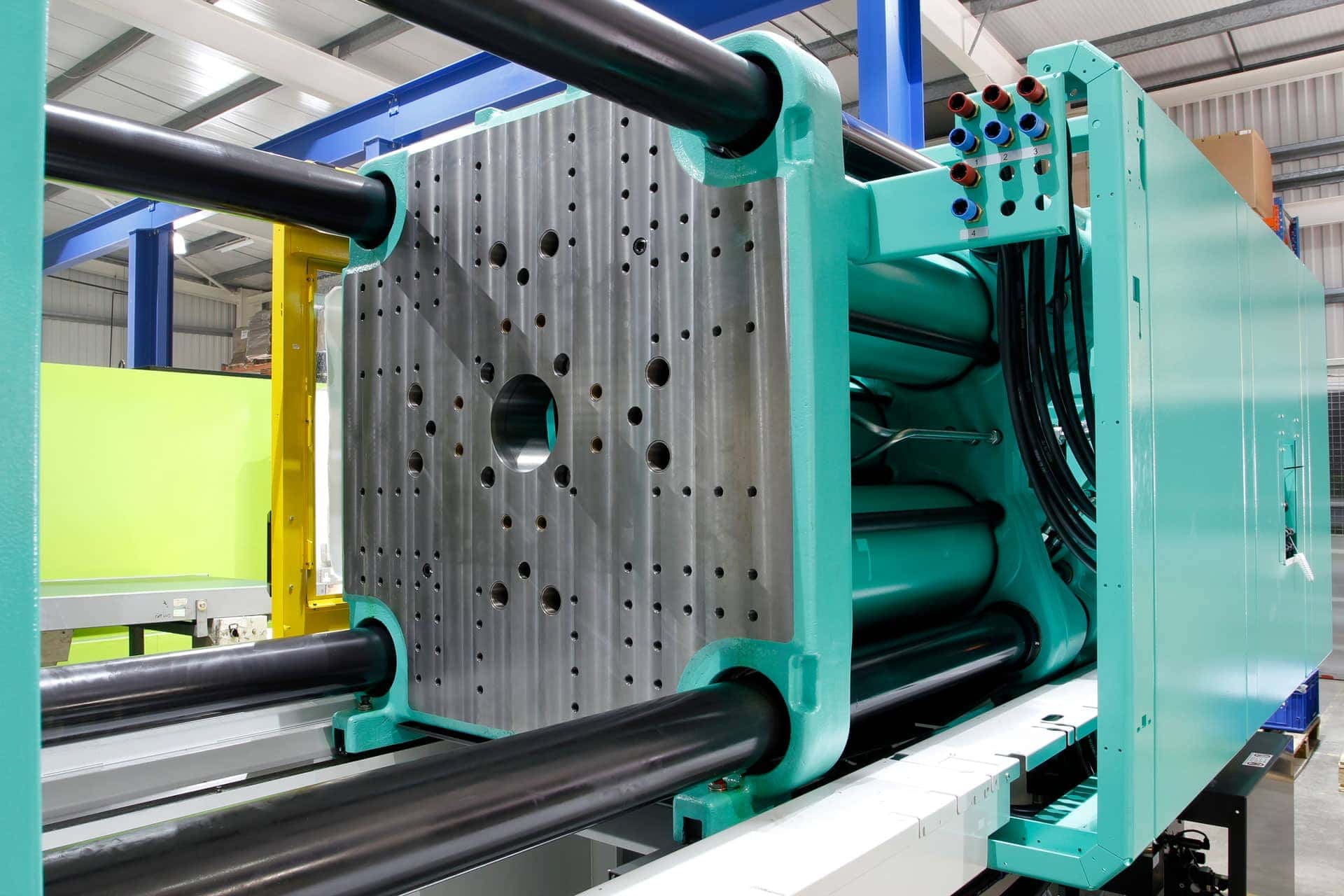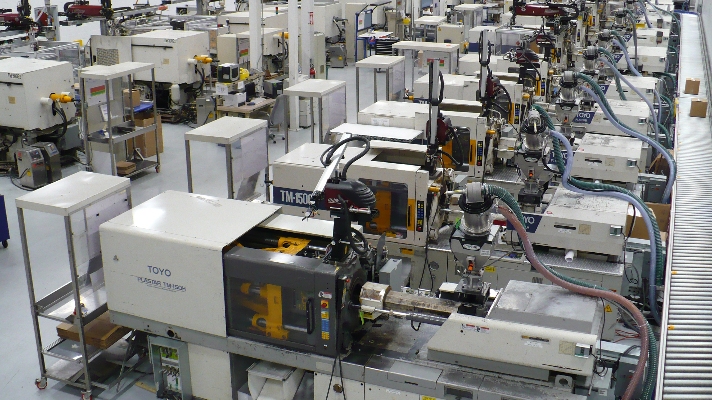Why Plastic Injection Molding Is Essential for Precision and Sturdiness
Why Plastic Injection Molding Is Essential for Precision and Sturdiness
Blog Article
Recognizing the Fundamentals of Plastic Shot Molding Procedures
Plastic shot molding functions as a cornerstone of modern-day manufacturing, offering a methodical technique to producing complicated elements with precision. This procedure not only encompasses the basic actions of melting and infusing materials into mold and mildews but also involves a nuanced understanding of different influencing variables, such as temperature level and stress. As markets significantly require effectiveness and top quality, the details of this method come to be a lot more vital. Exploring these necessary components can expose just how even small adjustments can lead to significant improvements in production results, elevating inquiries about the potential for innovation in this recognized procedure.
What Is Plastic Injection Molding?
Plastic shot molding is an extensively used manufacturing procedure that transforms thermoplastic and thermosetting products right into specific and complicated shapes. This method is preferred for its capability to produce high volumes of similar parts with remarkable precision, making it an indispensable approach in various industries, including auto, durable goods, and medical devices.
The procedure entails thawing the picked plastic material and injecting it into a mold under high stress. The mold, developed to the specifications of the desired part, allows the molten plastic to materialize as it cools down and strengthens. Once the material has actually solidified, the mold and mildew is opened, and the finished element is expelled.
Plastic injection molding supplies a number of advantages, including minimized waste, consistency in manufacturing, and the capacity to integrate detailed designs that may be challenging with other manufacturing approaches. Additionally, it sustains a wide variety of products, each giving one-of-a-kind buildings that can be tailored for specific applications. As markets remain to innovate, plastic injection molding continues to be at the forefront, making it possible for the advancement of innovative products that meet advancing consumer demands.
The Shot Molding Process
The shot molding process is an innovative method that involves numerous vital phases to create high-quality plastic elements. Plastic pellets are fed right into a warmed barrel where they are melted into a viscous liquid. This molten plastic is after that infused under high stress into a precision-engineered mold and mildew, which forms the product right into the preferred type.
Once the mold and mildew is loaded, the plastic is allowed to cool and solidify, taking the form of the mold and mildew cavity. Cooling time is critical, as it affects the cycle time and the last residential or commercial properties of the molded part. After enough cooling, the mold and mildew opens up, and the finished element is expelled making use of ejector pins.

Materials Utilized in Injection Molding
Various products can be utilized in the shot molding process, each offering special residential properties that provide to certain applications. The most frequently used products include thermoplastics, thermosetting plastics, and elastomers.

Thermosetting plastics, like epoxy and phenolic materials, undergo a chemical change during the curing procedure, causing an inflexible, inflexible structure. These materials are optimal for applications needing high warmth resistance and structural stability, typically used in vehicle components click now and electrical insulators.
Elastomers, including silicone and rubber-based materials, supply versatility and resilience. Their unique properties make them appropriate for applications that demand elasticity, such as seals and gaskets.
In addition, specialty products like bio-based plastics and compounds are obtaining traction for their environmental advantages and enhanced efficiency attributes, widening the range of injection molding applications in different sectors. Understanding the residential or commercial properties of these materials is essential for choosing the proper type for specific projects.
Benefits of Injection Molding
Injection molding stands out as a highly efficient production process that supplies numerous benefits for producing complicated components with precision. Among the most significant benefits is the capability to develop intricate styles that would certainly be impossible or challenging to attain with various other techniques (Plastic Injection Molding). The process permits tight tolerances and in-depth attributes, making sure top notch elements
In addition, shot molding is known for its rapid production capacities, making it a suitable option for high-volume manufacturing. As soon as the mold is developed, parts can be generated quickly, reducing lead times and enhancing overall productivity. This performance not just reduces production costs but additionally gives a competitive side on the market.
The adaptability of materials made use of in shot molding further boosts its allure. A vast array of thermoplastics and thermosetting polymers can be used, allowing suppliers to choose products that finest satisfy their certain requirements, consisting of heat, stamina, useful reference and adaptability resistance.
Moreover, the process minimizes waste, as excess product can usually be recycled and recycled. This sustainability element adds to a reduced ecological influence, making injection molding an accountable manufacturing selection. On the whole, the advantages of injection molding make it a recommended approach for several markets.
Variables Impacting Product Top Quality
While countless factors can affect item quality in injection molding, recognizing these elements is critical for achieving optimum outcomes. Trick facets consist of material selection, processing specifications, and mold style.
Product option plays a crucial function, as various polymers show special residential or commercial properties that affect flowability, toughness, and thermal stability. Inadequate material option can bring about defects such as warping or insufficient filling.
Handling criteria, including stress, cycle, and temperature level time, need to be diligently managed. Variants in these settings can result in inconsistencies partly measurements and surface area coating. As an example, exceedingly heats might trigger destruction of the polymer, while insufficient pressure can result in brief shots.
Mold design is equally crucial, as it determines the circulation of the molten plastic and the cooling process. Badly made molds might cause irregular cooling rates, causing dimensional inaccuracies and recurring stresses.

Verdict
Finally, plastic injection molding acts as an essential manufacturing procedure that allows the effective manufacturing of high-quality parts. Proficiency of the injection molding procedure, consisting of the understanding of materials and the influence of different factors on item quality, is important for achieving optimal results. The advantages of this technique, such as cost-effectiveness and style flexibility, more highlight its significance throughout numerous sectors, strengthening its status as a recommended selection for high-volume manufacturing.
Plastic shot molding serves as a keystone of modern-day manufacturing, offering a methodical approach to creating intricate elements with accuracy.Plastic injection molding find offers a number of advantages, consisting of decreased waste, uniformity in production, and the capability to incorporate complex layouts that may be challenging with various other manufacturing approaches (Plastic Injection Molding). As sectors proceed to introduce, plastic injection molding continues to be at the forefront, allowing the development of sophisticated products that fulfill progressing customer demands
The shot molding procedure is an advanced method that entails several essential stages to create premium plastic elements.In verdict, plastic injection molding serves as an essential manufacturing procedure that allows the reliable production of top quality components.
Report this page